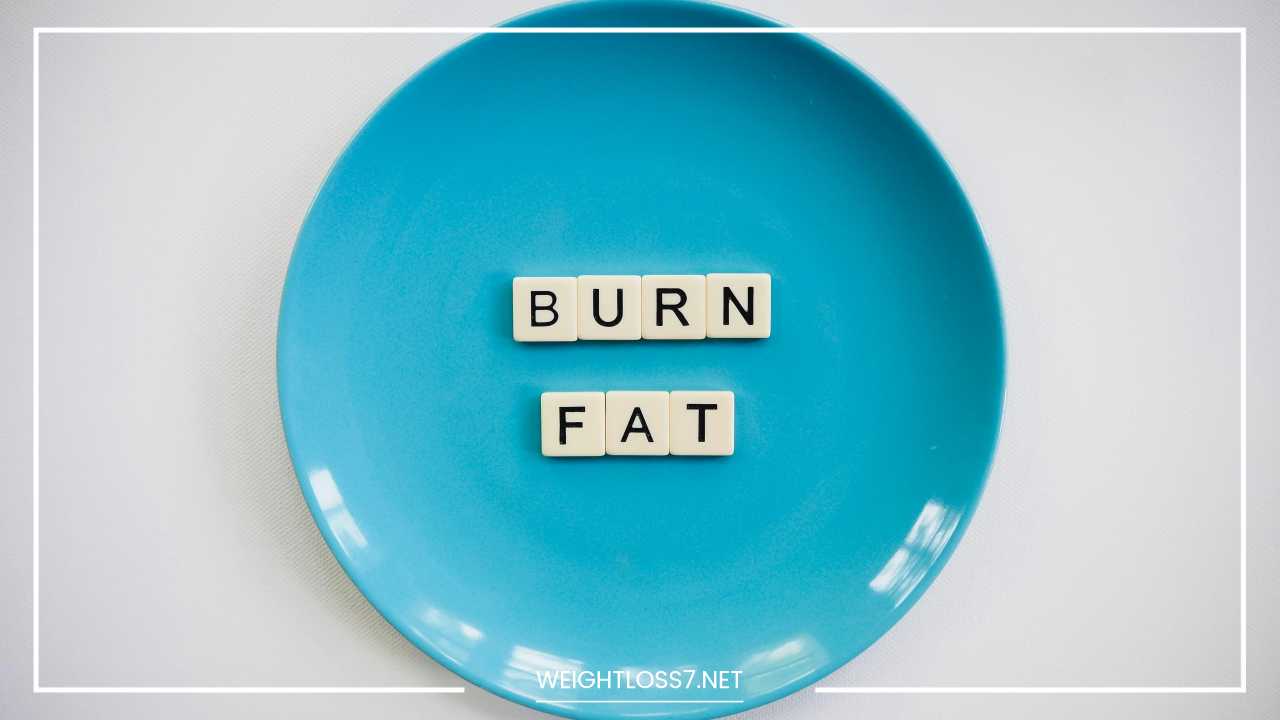How to Burn Fat & Build a Healthier You

How to Burn Fat
Shedding Fat: A Comprehensive Guide to Burning Calories and Building a Healthier You
Burning fat. It’s a phrase plastered across headlines, whispered in gym locker rooms, and a constant undercurrent in our weight-conscious society. But the truth is, shedding fat and reaching a healthy weight is a far cry from a quick fix. It’s a journey that requires a shift in mindset, a focus on sustainable habits, and a commitment to your overall well-being.
This comprehensive guide dives deep into the science of fat burning, explores effective strategies, and equips you with actionable tips to achieve your goals.
Demystifying Fat Loss: The Calorie Equation
Our bodies function like intricate biological machines. The energy we consume through food fuels our daily activities, measured in units called calories.
To shed fat, we need to create a calorie deficit. This simply means burning more calories than we consume, prompting our bodies to tap into stored fat for energy, leading to weight loss.
Here’s a breakdown of the calorie equation:
- Calorie Deficit: This is the golden zone for fat burning. When you burn more calories than you consume, your body dips into stored fat for fuel, resulting in weight loss.
- Calorie Surplus: Consuming more calories than you burn leads to weight gain, with excess calories getting stored as fat. Think of it as your body’s way of creating an energy reserve for later.
- Calorie Balance: When calorie intake matches calorie expenditure, your weight remains stable. It’s like a balanced budget for your body’s energy needs.
The Art of Calorie Counting: Beyond a One-Size-Fits-All Approach
While the calorie deficit principle holds true, individual calorie needs vary considerably. Factors like age, sex, weight, activity level, and even genetics influence how many calories your body burns. Here’s how to navigate the world of calorie counting:
- Online Calculators: Several reputable websites offer free calorie calculators that consider your individual characteristics to estimate your daily calorie needs.
- Registered Dietitians: Consulting a registered dietitian is an excellent way to personalize your calorie goals. They can factor in your specific health conditions, dietary preferences, and fitness goals to create a sustainable and effective plan.
The Power of Two: Diet and Exercise – A Synergistic Approach
For successful fat burning, a two-pronged approach is key: a healthy diet and regular exercise. They work synergistically to create a calorie deficit and promote overall well-being.
Diet: Building a Sustainable Eating Plan
- Embrace Whole Foods: Prioritize whole, unprocessed foods like fruits, vegetables, whole grains, lean protein sources (chicken, fish, legumes), and healthy fats (avocados, nuts, seeds). These foods provide essential nutrients, keep you feeling satiated for longer, and help regulate blood sugar levels, reducing cravings.
- Limit Processed Foods: Processed foods are often loaded with unhealthy fats, added sugars, and sodium, all of which can hinder your weight loss efforts. They’re also typically calorie-dense and offer minimal nutritional value, leaving you feeling hungry soon after consumption.
- Portion Control is Key: Be mindful of how much you eat. Use smaller plates and bowls to visually limit portion sizes and focus on mindful eating practices. Savor each bite, chew thoroughly, and pay attention to your body’s hunger and fullness cues.
- Don’t Skip Meals: Skipping meals can disrupt your metabolism and lead to overeating later in the day. Aim for three balanced meals and healthy snacks throughout the day to keep your metabolism running smoothly and prevent blood sugar crashes that trigger cravings.
- Stay Hydrated: Water is crucial for overall health and can also aid in weight loss by promoting satiety and boosting metabolism. Aim for eight glasses of water daily, adjusting based on your activity level and climate.
Exercise: Finding Activities You Enjoy
There’s no single “best” exercise routine for fat burning. The key is to find activities you genuinely enjoy and can stick with consistently. Here’s a breakdown of different exercise types and their benefits for fat loss:
- Cardio: Your Calorie-Burning Engine: Cardiovascular exercise, like brisk walking, running, swimming, cycling, or dancing, is excellent for burning calories. Aim for at least 150 minutes of moderate-intensity cardio or 75 minutes of vigorous-intensity cardio per week. Moderate-intensity cardio leaves you comfortably breathless but able to carry on a conversation. Vigorous exercise makes conversation difficult.
- Strength Training: Building Muscle, Boosting Metabolism: Building muscle mass through weightlifting or bodyweight exercises not only increases strength but also boosts your metabolism, helping you burn more calories even at rest. This is because muscle tissue is metabolically active, meaning it burns calories just to maintain itself. Aim for strength training exercises that target major muscle groups at least twice a week. Squats, lunges, push-ups, rows, planks, and overhead presses are all excellent examples. You can perform these exercises with bodyweight, free weights (dumbbells, barbells), or weight machines.
Here are some additional benefits of strength training for fat burning:
- Increased Strength: As you gain muscle, you’ll be able to lift heavier weights during your workouts, which translates to burning more calories during your exercise sessions.
- Improved Bone Density: Strength training helps to increase bone density, which is crucial for overall health and can help to prevent osteoporosis later in life.
- Better Posture and Balance: Strong muscles support proper posture and balance, reducing your risk of falls and injuries.
- Enhanced Confidence: Seeing and feeling yourself get stronger can significantly boost your confidence and self-esteem.
Finding the Right Fit:
Whether you’re a beginner or a seasoned gym-goer, there’s a strength training program out there for you. Here are some tips for getting started:
- Consult a Certified Trainer: A certified personal trainer can design a safe and effective strength training program tailored to your fitness level and goals. They can also teach you proper exercise technique to prevent injuries.
- Start with Bodyweight Exercises: If you’re new to strength training, bodyweight exercises are a great place to begin. These exercises require no equipment and can be done anywhere. Once you feel comfortable with bodyweight exercises, you can gradually progress to using weights.
- Focus on Form: Proper form is essential to prevent injuries and maximize the effectiveness of your workouts. Don’t be afraid to start with lighter weights and focus on controlled movements.
- Listen to Your Body: Take rest days when needed and don’t push yourself to the point of pain.
Strength training is a powerful tool for fat burning and overall well-being. By incorporating it into your routine and following these tips, you can build muscle, boost your metabolism, and achieve your fitness goals.
-
Strength Training Exercises: Squats, lunges, push-ups, rows, planks, and overhead presses are all excellent examples of strength training exercises. You can perform these exercises with bodyweight, free weights, or weight machines.
-
High-Intensity Interval Training (HIIT): HIIT involves alternating short bursts of intense exercise with periods of rest or lower-intensity activity. This method can be a time-efficient way to burn calories and improve overall fitness. Here’s an example: sprint for 30 seconds followed by 60 seconds of walking, repeated for 10-15 minutes.
-
Finding Your Fitness Groove: Don’t be afraid to experiment! If you find jogging monotonous, try a dance class. If weights feel intimidating, explore bodyweight exercises or group fitness classes. The key is to find activities you enjoy and can see yourself doing consistently.
Beyond the Scale: A Holistic Approach to Well-Being
While the scale might be a motivating factor, focusing solely on weight can be misleading. Here are some additional aspects to consider on your fat-burning journey:
- Body Composition: Muscle weighs more than fat. As you gain muscle mass through exercise, you might see a decrease in body fat percentage even if the number on the scale doesn’t change drastically. A bioelectrical impedance analysis (BIA) scale or a visit to a fitness professional for body composition testing can provide a more complete picture.
- Strength and Endurance: As you exercise regularly, you’ll likely experience increased strength and improved endurance. You’ll be able to lift heavier weights, run farther, or climb stairs with more ease. These improvements are excellent indicators of progress, even if the number on the scale doesn’t budge significantly.
- Overall Well-being: Focus on how you feel. Increased energy levels, better sleep quality, improved mood, and a more positive outlook are all signs you’re on the right track. Celebrate these non-scale victories!
Sustainable Habits for Long-Term Success
Shedding fat requires commitment, but it shouldn’t feel like a punishment. Here are some tips to make your journey sustainable:
- Set Realistic Goals: Don’t fall prey to unrealistic expectations of overnight transformations. Aim for small, achievable goals, like adding a 30-minute walk to your routine three times a week or swapping sugary drinks for water. Celebrate your successes along the way, and gradually build on them.
- Find an Accountability Partner: Having someone to support and motivate you can make a world of difference. Share your goals with a friend, family member, or join an online support group. Knowing someone else is on the journey with you can provide encouragement and keep you on track.
- Plan Your Meals: Planning your meals and snacks in advance can help you make healthy choices and avoid unhealthy temptations. Stock your pantry and refrigerator with nutritious options, and prep healthy meals and snacks on the weekends to set yourself up for success during busy days.
- Don’t Deprive Yourself: Restrictive diets are often unsustainable and can lead to binge eating. Allow yourself occasional treats in moderation. A healthy lifestyle is about balance, not deprivation.
- Find Healthy Alternatives: Craving pizza? Try a whole-wheat pita bread topped with tomato sauce, lean protein, and vegetables. Yearning for ice cream? Opt for a frozen Greek yogurt with berries. There are plenty of delicious and healthy alternatives to satisfy your cravings.
- Manage Stress: Chronic stress can wreak havoc on your hormones, leading to increased desire for unhealthy foods and weight gain. Find healthy ways to manage stress, such as yoga, meditation, spending time in nature, or spending time with loved ones.
- Get Enough Sleep: Aim for 7-8 hours of quality sleep each night. When you’re sleep-deprived, your body produces more ghrelin, the hunger hormone, and less leptin, the satiety hormone, making you crave unhealthy foods and hindering your weight loss efforts.
- Make it a Lifestyle Change: View your fat-burning journey as a lifestyle change, not a temporary diet. Focus on developing healthy habits you can maintain for the long term. This approach will lead to sustainable weight loss and a healthier, happier you.
Remember: Shedding fat is a marathon, not a sprint. Be patient, celebrate your progress, and enjoy the journey towards a healthier, more confident you.

















